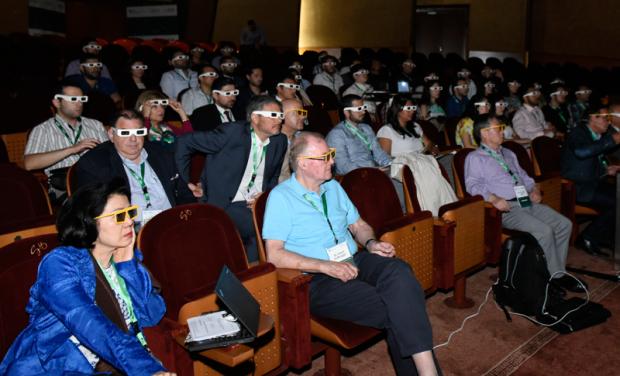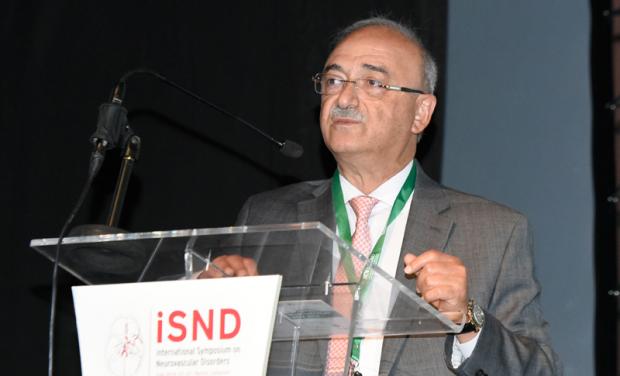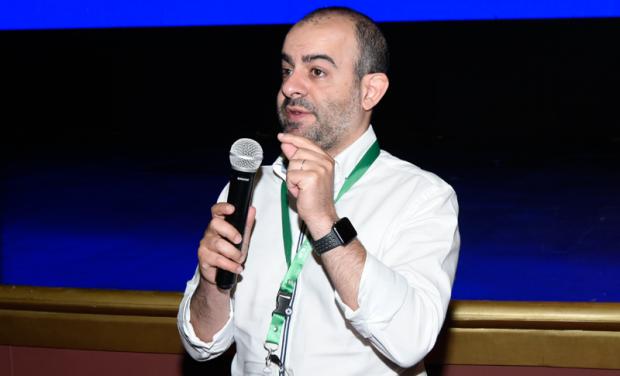Valuable Sponsorship Contributes to LAU’s Successful International Symposium of Neurovascular Disease
The inaugural LAU International Symposium of Neurovascular Disease (ISND), held July 22 to July 27, successfully hosted close to 30 world-renowned speakers and hundreds of participants. Organized at Grand Hills Hotel Broumana, the symposium was held under the high patronage of Lebanese President Michel Aoun, and generously sponsored by several multinational companies, and endorsed by the European Society of Minimally Invasive Neurological Therapy, the Lebanese Society of Neurology, the Lebanese Society of Neurosurgery, the Lebanese Society of Radiology and the Pan-Arab Interventional Radiology Society.
Sponsors and donors of ISND were many and include Medtronic, Microvention, Stryker, Dima Healthcare, Tamer Freres, IntelMed, Cerenovus (Johnson & Johnson), Phenox, Balt, and GE Healthcare.
The well supported symposium featured lectures, roundtable discussions and symposia on acute stroke, aneurysm treatment, arteriovenous malformations, and vascular malformations of the spinal axis. Dr. Ali Al Khathaami, stroke and neurology consultant at King Abdulaziz Medical City in Riyadh, was among the speakers at the acute stroke module. He stressed the urgency of treating stroke patients within the first “golden hours” and offered advice on building a nationwide plan that necessitates collaboration between key stakeholders to make specialized centers – such as the one in LAU Medical Center-RH – accessible to more stroke patients.
Building on Al Khathaami’s call for collaboration was Dr. Charbel Mounayer, head of neuroradiology and radiology at the Dupuytren University Medical Center in Limoges, France. He revealed that one of the key issues facing stroke patients is the lack of cooperation between medical specialists on each case.
Similarly, Dr. Elisa Ciceri, director of neuroradiology at the University Hospital of Verona, Italy, agreed. She explained how stroke is an “emerging, time-sensitive pathology that demands good collaboration between the Ministry of Health, physicians, nurses and hospitals.”
LAU’s Assistant Dean for Continuing Medical Education Dr. Vanda Abi Raad spoke about the significance of Continuing Medical Education (CME). “Medicine is rapidly evolving, and that is why physicians at most institutions are required to accumulate a certain number of CME credits every year, so they can continue to hold privileges in their practice.”
Registration fees for the ISND were subsidized for those who have shown interest in attending but were unable to afford it, thanks to generous support from sponsors. “This goes perfectly in line with LAU’s mission and strategic plan as a university without borders,” said Gilbert and Rose-Marie Chagoury School of Medicine Dean Dr. Michel Mawad.
LAU Medical Center-RH residents in attendance noted the quality of lectures and the expertise of the speakers. “This provides us with a perfect networking opportunity to pursue training, subspecialty and/or research,” said Chief Resident Alain Rizk, a fifth-year radiology resident at the hospital. His colleague, fourth-year neurology resident Madiha Chatila, was especially impressed with Mercier’s lecture: “Seeing all the brain’s arteries in 3D is very eye-opening as it helps us correlate with the stroke clinical cases we are studying.”
Mercier, in turn, had a final message to young and talented practitioners: “In 10 years, there will be new breakthroughs, so the upcoming generations have a responsibility to advance what they are learning today and look to continuously advance their knowledge.”




